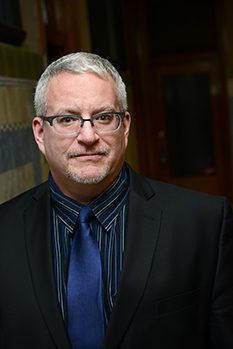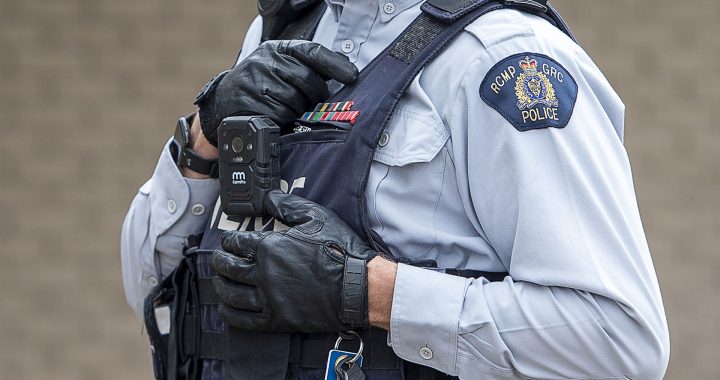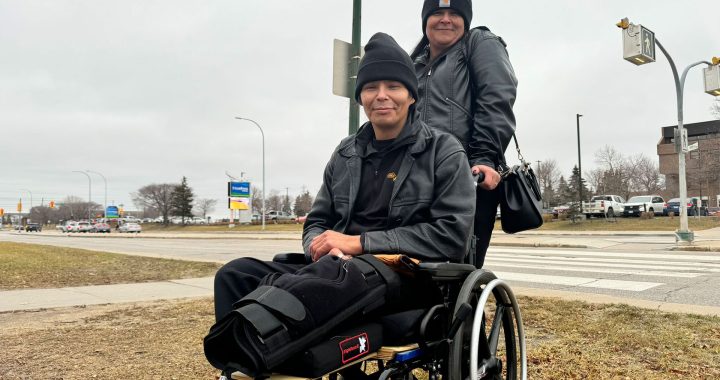(Frederick Knife with his children in this undated photo from Facebook.)
Kenneth Jackson
APTN National News
Frederick Knife was 30 days away from his statutory release date on a manslaughter sentence in the Saskatchewan Penitentiary when he attacked an inmate he believed was going to kill him.
The victim survived, but the Crown never wanted Knife to see the outside world again and tried to have him labeled a dangerous offender meaning he could be held indefinitely in 2013.
Knife was 28-years-old and had two adult convictions on his record – the aggravated assault conviction for the prison attack and the other for manslaughter that put him in there when he was 19.
The judge said Knife, a father of three and former member of the Indian Posse street gang, didn’t fit the criteria of a dangerous offender (DO) partly because he was too young and that he didn’t have a long enough criminal past as an adult.
Instead, he was sentenced to eight years and was classified as a long-term offender (LTO). With time served, Knife had four years remaining. He is appealing the LTO designation that comes with a strict 10-year supervision order upon release from prison.
But not every Aboriginal offender is, arguably, as lucky as Knife in the Prairie province.
Along with locking up more Aboriginal people than just about any place in Canada, it also has one of the highest percentages of Aboriginal people designated as dangerous offenders.
Aboriginal people make up 45 of the active 64 dangerous offenders in Saskatchewan, or 70 per cent according to the Correctional Service of Canada and data APTN National News retrieved from publicly available cases. The national average of Aboriginal dangerous offenders is about 29 per cent.
Last year alone all six of the offender’s classified as dangerous offenders were Aboriginal people. In 2015, one person has been labeled a DO, and he’s Aboriginal.
Only Manitoba has a higher rate of Aboriginal dangerous offenders as of March 2014 with nine of the 11 classified as Aboriginal according to CSC.
Calls for an inquiry
Saskatchewan has a crisis few want to talk about and needs a full inquiry into its justice system said Saskatoon criminal defence lawyer Michael Nolin.
“I would love to see an inquiry. I would love to see the province called on the carpet on this,” said Nolin, who is Metis and grew up outside North Battleford, Sask.
“This is very near and dear to my heart and I have tried to get the issue raised to a higher profile.”
If something doesn’t change, the province is going to need to start “building more prisons,” said Nolin.

“I think Aboriginal people are easy targets. They tend to be marginalized and tend to have limited resources. It’s just a perfect storm for people who don’t have the resources to stick up for themselves.” Michael Nolin
Nolin has taken part in six dangerous offender cases, five involved Aboriginal people.
“I think Aboriginal people are easy targets. They tend to be marginalized and tend to have limited resources,” said Nolin. “It’s just a perfect storm for people who don’t have the resources to stick up for themselves.”
On top of these statistics, Nolin said he’s called expert witnesses from CSC who have testified only two per cent of all dangerous offenders have been released on parole compared to convicted murderers who get parole in four per cent of cases.
“So you have less of a chance of getting out if you haven’t killed anybody under the dangerous offender legislation,” said Nolin.
Dangerous offender designations are typically for violent and sex crimes, excluding murder, and classified into several categories according to the Criminal Code.
The harshest is a DO designation with an indeterminate sentence with no chance of parole for seven years. A judge can also find an offender a DO, but with a determinate sentence, say for example four years in prison with LTO status upon release.
They can also not find them to be a DO and issue a determinate sentence with a LTO tag, like in Knife’s case.
Biased sentencing regime
Saskatoon defence lawyer James Scott has long believed Aboriginal people faced a bias in the judiciary and set out to prove it last year.
Scott examined 484 cases from 1996 to 2014.
He compared the sentences of Aboriginal offenders and then those handed to non-Aboriginal offenders for violent crimes other than murder.
His review found a major discrepancy when it came to the length of prison time judges handed down for the same crimes.
For violent crimes such as aggravated assault and armed robbery;
- Aboriginal offenders – 214 sentences totaled 51 years of incarceration.
- Non-Aboriginal offenders – 270 sentences totaled 29 years of incarceration.
First Nation, Metis and Inuit offenders received, on average, double the time, and in some cases the sentencing rate was 10 times higher.
For example, convictions for assault with a weapon saw Aboriginal offenders sentenced to 10 years in prison, while non-Aboriginal offenders were given a year.
(Editor’s note: These numbers could be higher because Scott only counted cases where the offender was identified as Aboriginal. In many cases reviewed by APTN the offender was Aboriginal but the written decision didn’t specify)
Scott’s full report can be read here: Reforming Saskatchewan’s Biased Sentencing Regime
It could explain why Saskatchewan has one of the fastest growing Aboriginal inmate populations in the country.
While Aboriginal people account for about 17 per cent of Saskatchewan’s population according to Statistics Canada, nearly 65 per cent of the inmates at the Saskatchewan Penitentiary were Aboriginal in 2013. The national average was 23 per cent
“All of this is because of the inter-generational effects of colonization and residential schools. Historic trauma causes too many Aboriginal youths to end up in custody starting from their teenage years,” said Scott. “Therefore, Aboriginal (people) go untreated and end up with longer criminal records. The longer the record, the more the punishment.”
Scott believes dangerous offender designations are directly tied to higher sentences.
“Aboriginals are vastly overrepresented in dangerous offender applications and (this) overrepresentation accounts for a shocking discrepancy between the lengths of custodial sentences for Aboriginals compared to non-Aboriginals,” Scott wrote in his report.
He points to statistics of Aboriginal offenders convicted of aggravated assault where 11 of the 16 cases involved dangerous offender applications. Of those 11, six were labelled a DO and the other five were classified as LTO.
In the nine cases involving non-Aboriginal people, the Crown sought dangerous offender applications in only two cases and one was successful.
Where the judge provided a sentence in their decision, Scott found Aboriginal people received, on average, 10 years of prison time compared to 3.5 years for non-Aboriginal. (In DO cases where the person gets an indeterminate sentence no length is given.)
Out of the 87 dangerous offender and long term offender applications since 1997 reviewed by Scott only two were dismissed.
“The Crown’s success rate … is remarkable,” said Scott.
He is also calling for an inquiry.
“I doubt there is going to be much reform without it,” said Scott. “It would help to just get the whole issue into people’s minds.”
Incarceration rates started to climb after Second World War
Incarcerations rates in the prairies began to climb in the 1950s.
Changes to federal policing may have played a role in the prairies according to the final report of Aboriginal Justice Inquiry of Manitoba in 1991.
“We believe that policing agreements with the Royal Canadian Mounted Police play a part in this story because they introduced consistent enforcement of Canadian law to communities where, until that time, Aboriginal law still operated,” the report states.
In 1999, retired Saskatoon lawyer Timothy Quigley gave expert testimony in the case of an Aboriginal man convicted of assault.
Quigley testified that incarceration rates of Aboriginal people around 1950 were underrepresented in Saskatchewan jails but climbed thereafter to 68 per cent in provincial jails by 1991 and 54 per cent, federally, in 1990.
“I think you have a number of factors. One is over-policing with the establishment of RCMP detachments in northern Saskatchewan. If you look at the end of the Second World War, and in the early 1950s, you would have had residential schools but you also would have had a generation or two of survivors of residential schools,” he told APTN, adding around the same time there was a “major urbanization” of Aboriginal people moving to cities who faced increased inequality.
The last residential school in Canada closed in Saskatchewan in 1996.
The schools operated for nearly a century, removing an estimated 150,000 children from their parents and putting them in schools sometimes hundreds of kilometres away.
Many faced physical and sexual abuse at the hands of people representing varying religious denominations that ran the schools.
In his 1989 paper, Locking Up Natives in Canada, British Columbia lawyer and professor Michael Jackson wrote in detail of the crisis around imprisoning Aboriginal people.
“In Saskatchewan, prison has become for young native men, the promise of a just society which high school and college represent for the rest of us.
Placed in a historical context, the person has become for many young native people the contemporary equivalent of what the Indian residential school represented to their parents,” he wrote.
In 2008, Prime Minister Stephen Harper apologized, but the devastating impact on generations of First Nation, Metis and Inuit people was well established.
R. v. Gladue
The problem in Saskatchewan appears to be a lack of knowledge of Canada’s history.
And critics argue this results in the judiciary’s long history of failing to effectively apply Gladue principles at sentencing.
Those principles were handed down by the Supreme Court of Canada in its historic ruling in R. v. Gladue, named after Aboriginal woman Jamie Gladue who appealed her manslaughter sentence in 1999.

The high court didn’t change her sentence, instead, it issued some ground rules for lower courts to address the critical over-representation of Aboriginal people in the justice system.
From that day onward, courts had to take into account what are commonly called Gladue principles:
- the unique systemic or background factors which may have played a part in bringing the particular Aboriginal offender before the courts;
- and the types of sentencing procedures and sanctions, which may be appropriate in the circumstances for the offender because of his or her particular Aboriginal heritage or connection.
The SCC found the incarceration of Aboriginal people to be at crisis levels, but since that 1999 decision, rates have only gone up. The court made another ruling in 2012, R. v. Ipeelee, reinforcing the need for courts to take Gladue principles seriously.
“Courts have, at times, been hesitant to take judicial notice of the systemic and background factors affecting Aboriginal people in Canadian society,” the Supreme Court said in Ipeelee. “To be clear, courts must take judicial notice of such matters as the history of colonialism, displacement, and residential schools and how that history continues to translate into lower educational attainment, lower incomes, higher unemployment, higher rates of substance abuse and suicide, and of course higher levels of incarceration for Aboriginal peoples.”
Retired judge criticizes Saskatchewan judiciary – again
Cunliffe Barnett, a retired judge from British Columbia, sparked controversy in Saskatchewan last September when he accused the courts there of ignoring Gladue principles at sentencing.
Barnett has long kept an eye on how judges across Canada’s upheld the SCC’s Gladue ruling.
He was struck with how poorly Saskatchewan’s judges followed the high court’s guidelines.
A retired Saskatchewan Court of Appeal judge called Barnett’s comments unsubstantiated.
But Barnett didn’t back down, instead he dug in and began poring over Court of Appeal cases. Of the 146 cases he reviewed, Barnett found no mention of Gladue in 100 of them. In 22 cases he couldn’t find any mention of the person being Aboriginal. He confirmed elsewhere that they were.
Barnett was in Saskatchewan again this month to speak at a conference and was still critical of the bench.
“In September last year I said that ‘many Saskatchewan judges have been reluctant to ever acknowledge the Gladue and Ipeelee decisions’. I said also that ‘in Saskatchewan many judges have been reluctant to disclose the fact that the person being sentenced is indeed an Aboriginal person’. I stand by those statements today,” said Barnett, who was a provincial court judge in B.C. from 1973 to 2006.
Barnett believes it’s because judges in Saskatchewan are uneducated on the history of Aboriginal people.
“There is a colonial history in Saskatchewan … I am confident that I am on solid ground when I say that this tragic history is not yet well understood by more than perhaps very few Saskatchewan judges,” he said.
Is the situation changing?
Critics see a recent case as maybe a small sign of things starting to change in Saskatchewan.
Last month, the Court of Appeal overturned a dangerous offender designation for a First Nation man who successfully argued his Gladue principles were ignored at his dangerous offenders hearing.
Mitchell Moise, 36, was labeled a dangerous offender in 2012. He has a rap sheet of over 45 convictions for violent crimes.
“Trial fairness requires Mr. Moise be given an opportunity to present evidence of aboriginal specific programming, services and supports which might assist in managing his behaviour in the community and reducing his risk to reoffend,” the court said in its decision.
The panel of three judges found both the Crown and defence, as well as the judge, didn’t think Gladue principles could be considered at his dangerous offender hearing.
“In this case, the sentencing judge’s error in failing to consider Gladue was compounded by the fact that both Crown and defence counsel believed Gladue considerations had no application,” said the court.
Defence lawyer James Scott said in the last few months he’s started to see a small shift among the judiciary when it comes to Gladue principles and his hope is it continues nearly 16 years after the Supreme Court first ruled on the matter.
“There is certainly more awareness. More people are getting involved and it does look like things have the beginning of improving,” he said.
Michael Nolin agrees with Scott’s report on sentencing of Aboriginal people, but doesn’t share the same positive outlook when it comes to the province writing Gladue reports.
“I got a pretty good idea that most Saskatchewan judges don’t know what a formal Gladue report is,” he said. “We know that in the defence bar that there is nobody in Saskatchewan qualified to do one which is surprising given the proportionate of representation of Aboriginal people out here. Multiple levels of courts don’t understand or care to follow Ipeelee or Gladue. They just provide lip-service.”
In some provinces, the court learns about an Aboriginal offender’s past through a Gladue report. Along with a history lesson, it also tries to present options other than jail or prison at sentencing by providing community-based solutions, such as addiction treatment and counselling.
Saskatchewan’s plan
The province has recognized it has a problem with incarceration rates said Dale McFee, the deputy minister of corrections and policing in the Ministry of Justice.
McFee has said in the past, and continues to believe, the province can’t arrest its way out of the problem.

“What we’re doing is going upstream to actually take people out of the system and get them services or connect them to what they actually need before they’re in the justice system.” Dale McFee, deputy minister of corrections and policing in Saskatchewan
Over the last few years, the former police chief of Prince Albert has been leading a charge within the ministry to “turn the ship around” as he puts it.
“What we’re doing is going upstream to actually take people out of the system and get them services or connect them to what they actually need before they’re in the justice system,” he said, adding one area is developing a mental health strategy and plan.
He said serious and violent offenders make up 50 per cent of re-contact in the justice system.
“There are people that are in the system that need to be in system, you don’t forget about them, and they need different treatment in relation to it, but these people are responsible for up to 50 per cent of re-contact in the justice system. There are where you need those intense services,” said McFee. “We know over time, based on a two and half year study, that you can reduce recidivism by 30 to 40 per cent.”
He said the province achieves this through programs, such as rehabilitative services and employment.
McFee said the province has been working with First Nations, education, social services- just about everyone to change the approach.
“It’s tied into the roots of marginalization. If you look at housing, poverty and additions they’re disproportionately represented in those environments … they’re disproportionately going to be a product on the back end as well, right?” he said.
When asked about the high rate of Aboriginal people being labelled as dangerous offenders, McFee said he didn’t know the number but it wouldn’t surprise him because it’s close to the overall incarceration rate in the province.
“Look at what feeds into the system and look at what comes out of it. If you don’t go upstream to alleviate what comes in how can you fix it down stream?” he said.
Quigley agrees with addressing the issue up stream and doesn’t think a public inquiry would solve this.
He said the disparities in resources provided to education and social services for First Nation communities is a crime.
“That’s why when I say I don’t think the criminal justice system has many answers it’s because I think some things have been tried and don’t work. What we really need is a societal push for much, much greater socio-economic equality and in the process reduce, if not eliminate, the racism we have,” said Quigley.
Not just a provincial problem
Canada’s prison watchdog has been issuing reports critical of Canada’s correctional service for years.
Howard Sapers has focused many reports about the over-representation of Aboriginal people in the prison system.
He said in 2013, between March 2010 and January 2013, Manitoba, Saskatchewan and Alberta accounted for 39.1 per cent of all new federal inmate growth.

Most of that was led by Aboriginal offenders who make up about 50 per cent of the population in prisons there.
“We see an over-representation of Aboriginal Canadians coming in the federal penitentiaries and it’s not because of predisposed positions to commit more crime. It’s because the circumstances many Aboriginal Canadians are in, including the effects of colonization. We’re still dealing with the inter-generational trauma effects of the 60s Scoop, residential schools and so many other issues,” said Sapers. “All of that doesn’t excuse the criminal behavior. The point of the Supreme Court decisions, such as Gladue and Ipeelee, was to urge restraint on how we respond to that criminal behavior to try and counterbalance that history.”
Gladue principles are ignored too often in courts across the country, including in custody, said Sapers.
“It’s not that you just have over-representation of Aboriginals incarcerated. You also see over-representation of Aboriginals receiving longer sentences, you see an over-representation of Aboriginals versus non-Aboriginals be held in higher security levels, being held in custody longer before first release and being subject to more dangerous offender applications,” he said.
Frederick Knife left gang before dangerous offender hearing
Soon after Frederick Knife attacked a fellow gang member on the gang wing of the Saskatchewan pen, he told a correctional officer to take him off the wing.
The officer laughed but Knife was persistent so he was moved, by request, into self-segregation.
“He recounted that his young son asked him on the telephone, ‘When are you going to leave the gang and come home to me?’” reads his latest court decision. “He further commented that ‘seven years in jail makes a person think.’”
He told the court he wanted to turn his life around.
It appears he has, on the inside, but is trying to get out and back to his family.
The Saskatchewan Court of Appeal heard his case in January and hasn’t released its decision yet, which is taking an “unusual” amount of time said Nolin.
So, Knife waits – but no longer in segregation. He’s now back in the maximum security wing and staying out of trouble.
In fact, his security risk has been dropped from maximum to medium. Nolin suspects CSC is waiting for his appeal decision before moving Knife.
Update: Soon after publishing APTN received new data about dangerous offenders it had been requesting from the Correctional Service of Canada. The story was updated to reflect those statistics.









